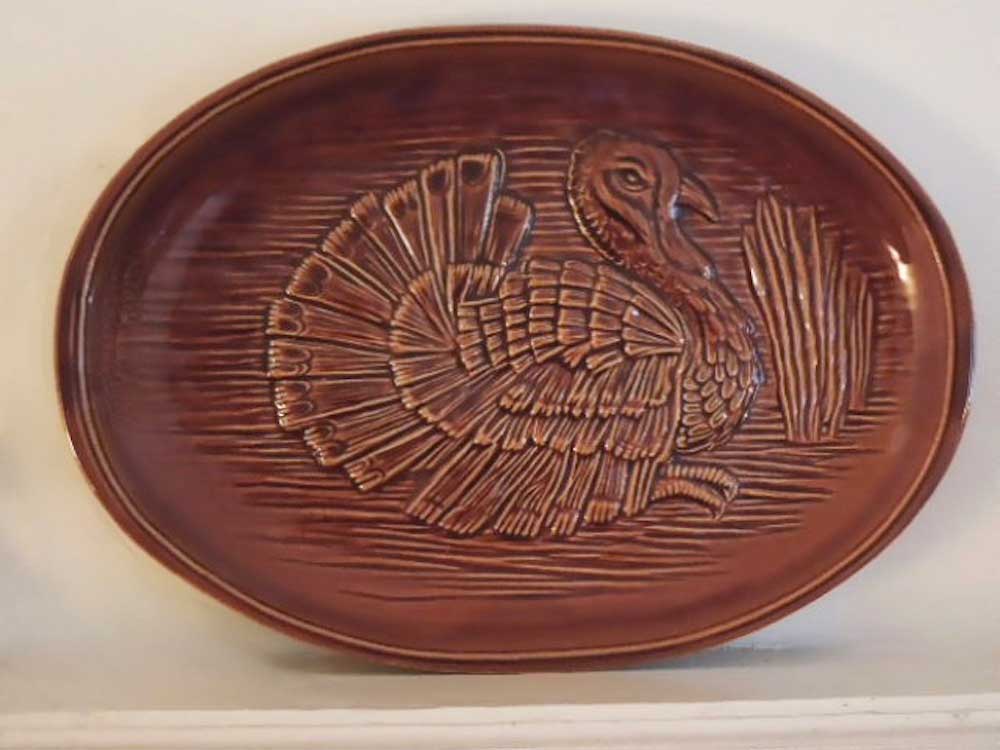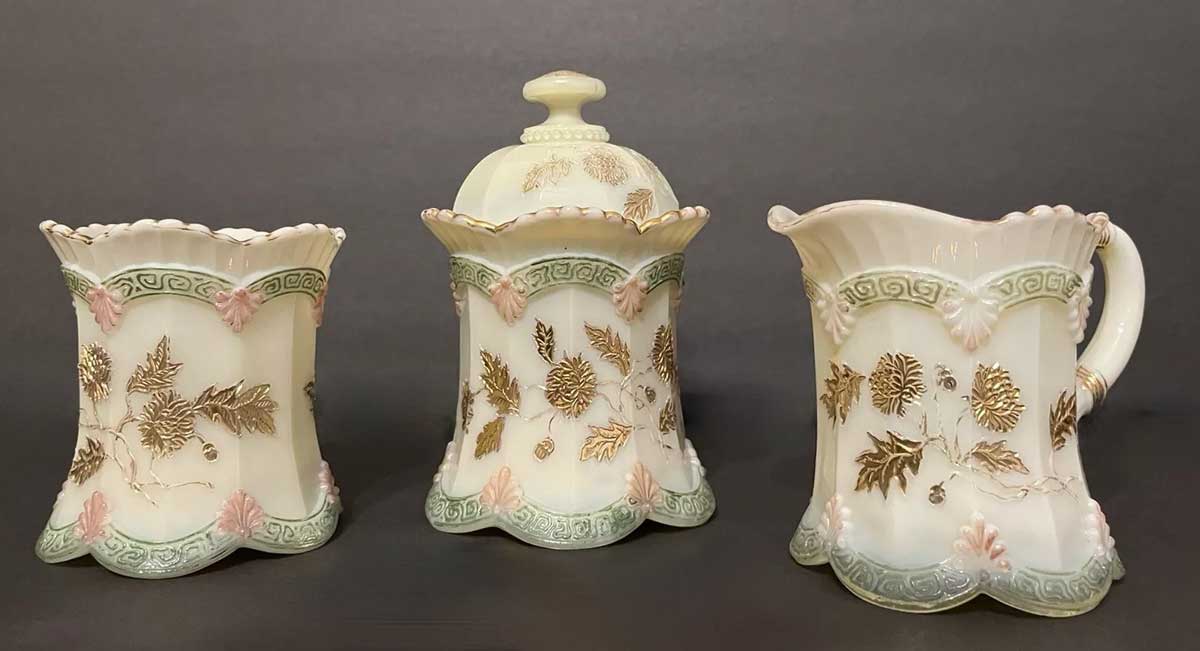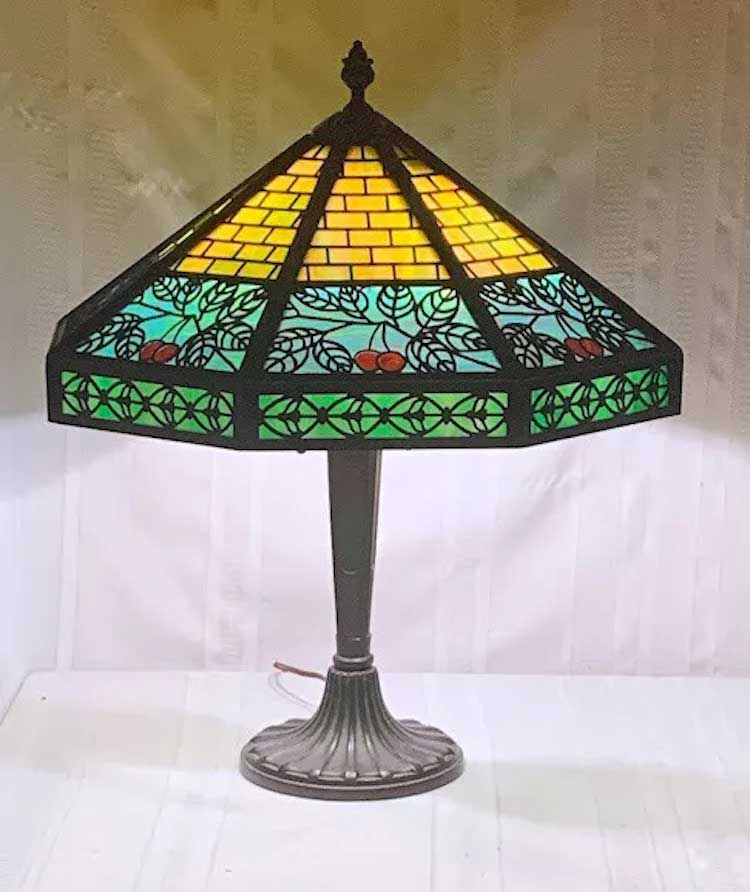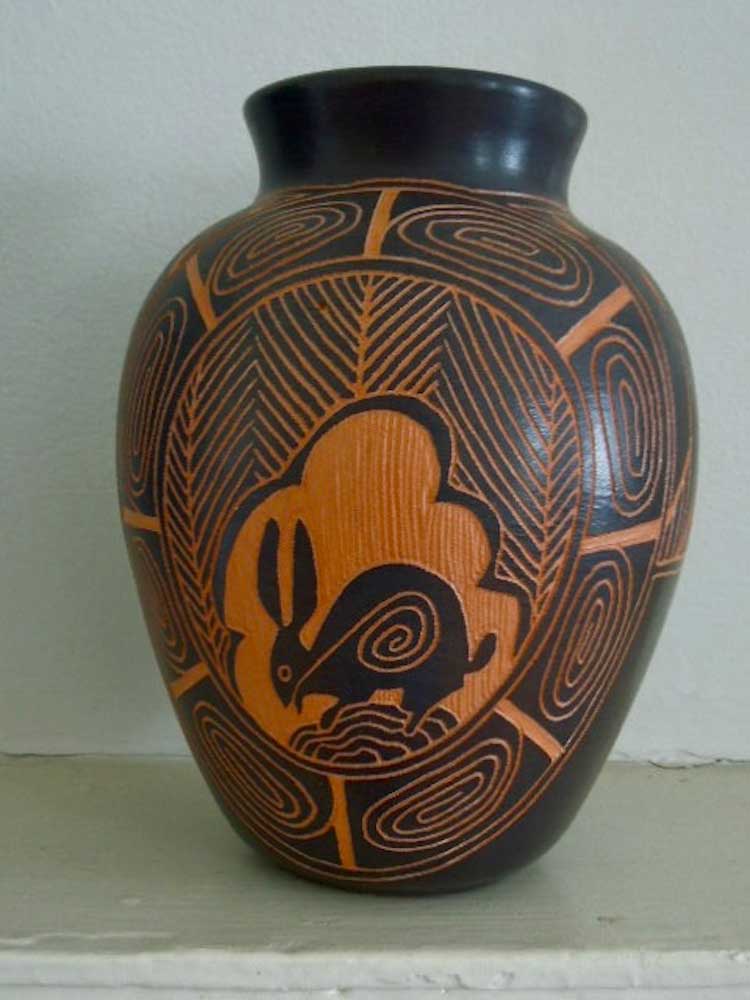Little lights for winter celebrations
December 2024
Good Eye
Little lights for winter celebrations
by Peggy Whiteneck
Candlelit fairy lights (AKA fairy lamps) were popular in the 19th century before access to gas and electrical lighting. George Miller Clarke invented fairy lights in England in 1844, just about the dawn of the Victorian era. These lights consisted of a base, into which a candle could be inserted, and a chimney or shade. They would provide light when placed at intervals in hallways or rooms.
Their appearance differed from kerosene lamps in that fairy lamps were more colorful and decorative but also smaller; typical kerosene lanterns were strictly functional, consisting primarily of a tall shade and oil reservoir made of clear glass.
After Clarke introduced the form, several other Victorian companies produced fairy lights, being careful not to infringe on Clarke’s designs. These included Pairpoint, Baccarat, Hobbs Brockunier, Central Glass, and Daum, among others (www.fairylampclub.com). Later producers included Indiana Glass, Westmoreland, and Fenton.
Even though it didn’t start making them until the 1950s, fairy lights made by Fenton Art Glass Co. have become popular with modern collectors. The company issued fairy lights to celebrate seasons from winter to spring and holidays from Easter to Halloween to Christmas to … well, you name it. Fenton was especially interested in celebrating Christmas as a Christian holiday, but it was also careful to make the decoration of most of its winter-themed lights generic so that they can be enjoyed by those of other faiths (or no faith affiliation at all). Let’s not forget, for example, that December also brings us Hannukah, the Jewish “festival of lights.”
This article focuses on fairy lights, of whatever maker, that were made to celebrate winter and its holidays, a time when these twinkling lights are especially welcome in the dark nights – and often sunless days – of the season. But first, some information about safe usage.
Safety First
The oldest fairy lights generally consisted of one solid piece of glass with a tall stem and a wide skirt. (It’s worth noting here that the first ones Fenton made had a candle access hole that was too narrow to accommodate a votive candle, the size of choice for fairy lights. The company subsequently widened their one-piece lamps just enough to accommodate a votive.) Other fairy lights come in several shapes and numbers of separate parts. Most consist of the base with a separately molded top (two-piece), others of the base, globe, and a separate candle base between them (three piece).
Glassmakers, including but not limited to Fenton, that made fairy lights for distributor LG Wright even made four-piece forms, in which the fourth piece was a clear glass cylinder to hold the candle that was inserted into the middle, recessed holder found in the three-piece models. Consequently, these lamps look like three-piece models when viewed from the outside.
The insert that was this fourth piece may have been Wright’s effort to protect the outer globe from flame damage, it having been discovered that votive lights can generate sufficient internal heat to crack the chimney part of the lamp. Consequently, today’s collectors of all fairy light forms prefer to use shorter tea lights that generate far less heat – or, better still, LED-battery votives that generate no heat at all.
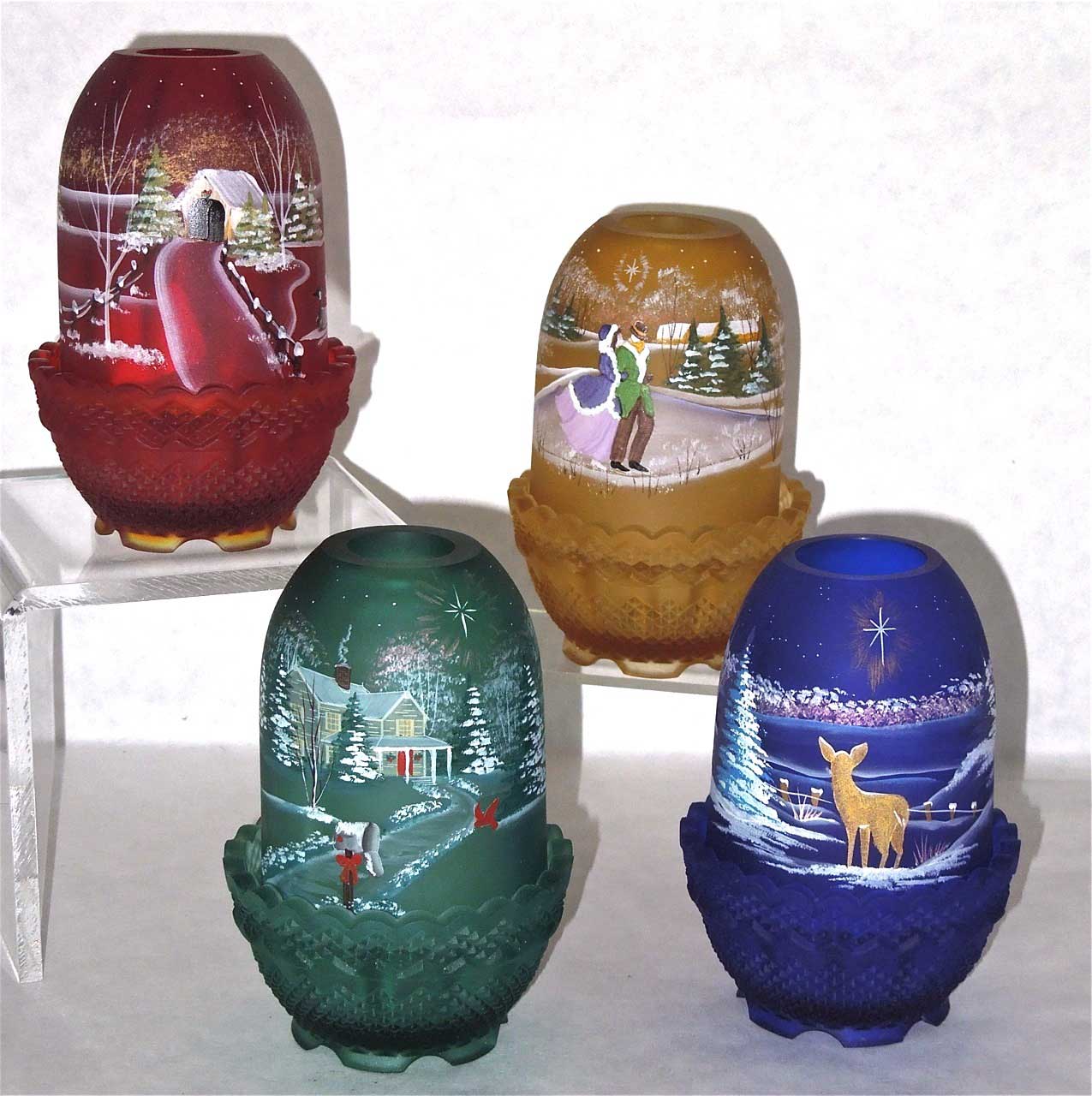
While the Fenton Co. did make at least two series of winter fairy lights that featured Nativity scenes, most Fenton two-piece fairy lights issued for winter, even when marketed under a Christmas name (here, “Christmas Star Series”) featured decoration that was more generically winter-themed. (Image courtesy of the author)
Winter Holiday Lights
Although Fenton created fairy lights to celebrate Christmas, its seasonal designs were not limited to Christmas themes. Many of these were more generically winter-themed, as in the group shown here, thereby avoiding religious exclusivity in market targeting.
Several fairy light makers mentioned above did produce undecorated glass colors, including green, red, and amber, that can be apt for the winter holidays, while these other makers usually did not feature painted globes. Westmoreland was the notable exception with its many decorated motifs, including a lushly decorated two-piece holiday light in the shape of an electric table lamp (a form also made at Fenton) with a poinsettia theme.
It’s December in the dark season … so let there be light!
Peggy Whiteneck is a writer, collector, and dealer living in East Randolph, VT. If you would like to suggest a subject that she can address in her column, email her at allwritealready2000@gmail.com.


